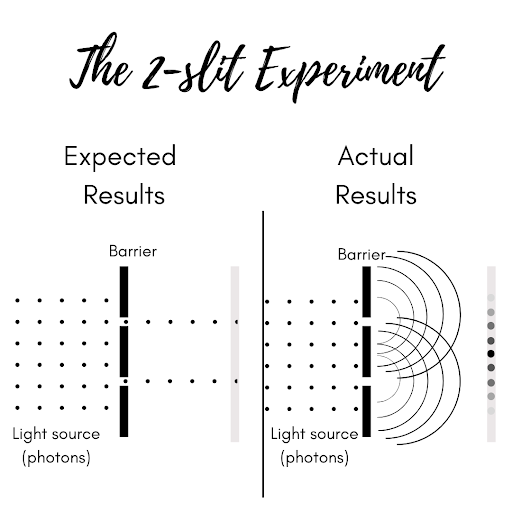Superposition is a quantum principle in which a physical system exists in a combination of all its possible states simultaneously until it is measured.
Most people have encountered this principle through Schrödinger’s Cat, a thought experiment that explains the concept and paradox of quantum superposition.
What Is Superposition?
Superposition is a quantum system’s ability to exist in multiple states simultaneously, based on all the possible states it can occupy. It is a fundamental quantum principle and one of the most well-known in quantum mechanics.
How Does Superposition Work?
For superposition, the most commonly used set of solutions is all possible solutions, also known as Hilbert space. In quantum physics, the Hilbert space is the mathematical representation of all the possible states that a system can take. If my system is a spinning electron, its Hilbert space is spin up and spin down, since these are the two possible options for the spin direction.
In one example of superposition, Schrödinger’s Cat, the solution space representing all possible cases contains only two states; the cat is either dead or alive. Hence, the cat exists in a superposition of both alive and dead states, and the act of measurement collapses it into one outcome.
As an equation, Schrödinger’s Cat looks like this:

This equation represents the mathematical form of the superposition of two states only. The cat is both dead and alive, with a 50/50 probability of each until we open the box and observe the cat.
The probability of any state equals the absolute value of the square of the amplitude in the equation. In the Schrödinger’s Cat equation, both states have the same amplitude of 1/√2. If we calculate it, the absolute square will give us one-half, or 50 percent. The 1/√2 factor ensures the quantum state is normalized — its total probability equals 1.
Superposition is not always uniform or of equal value. In the cat’s case, it’s uniform because the chance is equal that the cat is dead or alive, But that is only sometimes the case. It, of course, depends on your application and the system you are studying.
Superposition: The 2-Slit Experiment
We see another example of superposition from the world of physics in the behavior of electrons. In this experiment, imagine you have two walls sitting parallel to one another. The wall closest to you has two slits, and the other wall doesn’t. Now assume you shed light on the wall with the slits; what would you think would appear on the wall behind it?

At first, you might say, the light will go through the slits, and you’ll see two slit-shaped light patterns on the far wall. That’s not what happens. Instead, we see three light waves appear on the wall instead. Even though we use electrons in the experiment, they exhibit wave-like behavior, similar to photons in light. When the light waves go through the slits, the wave interferes with itself, producing an interference pattern on the back wall.
Light exhibits both wave-like and particle-like properties depending on how it is measured — a phenomenon known as wave-particle duality. It remains in such superposition until we observe it in a specific way. For example, if we look at light as rays of light from a lamp, we see light’s particle behavior but in the slit experiment, we observe light’s wave behavior.
Classical Superposition Examples
Superposition extends beyond just the field of quantum physics into our daily lives. While quantum superposition is a distinct phenomenon, the idea of combining multiple states or signals also appears in classical contexts. Classical superposition differs from quantum superposition in that it does not involve indeterminate states.
Here are some ways you can observe classical superposition every day:
- Any sound we produce is in superpositions of different wavelengths coming together to make different tones. You can feel that even more when you play any musical instrument.
- The sunlight (white light) is a superposition of different light wavelengths and they form a rainbow when they collapse.
- In electrical engineering, if you have a circuit with multiple power sources, you can analyze the circuit using one power source at a time to reach the same results.
- Geologists use superposition to determine the relative ages of rock layers. Because the layers of rock are superimposed, the oldest rock layer will be on the bottom and the youngest at the top.
Frequently Asked Questions
What is superposition in simple terms?
Superposition is a quantum principle that refers to a system existing in multiple states at the same time. A system in superposition may exist in a combination of all possible states until it is measured.
What is an example of superposition in real life?
The double-slit experiment is an example of superposition in real life. It demonstrates that light can be classified as both a wave and a particle simultaneously until it is observed in a specific way.
What is a Hilbert space in relation to superposition?
In the context of superposition, Hilbert space is the mathematical representation of all possible states a quantum system can occupy. A superposition is a combination of these states within this space.
How does Schrödinger’s Cat explain superposition?
Schrödinger’s Cat is a thought experiment where a cat in a box is both dead and alive simultaneously until someone opens the box and observes the cat, illustrating quantum superposition.





